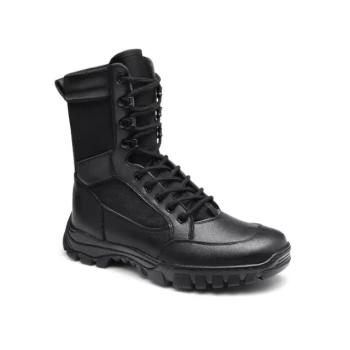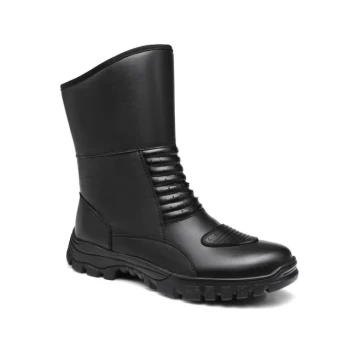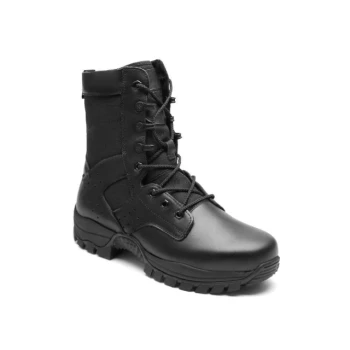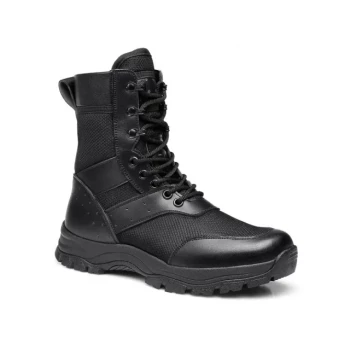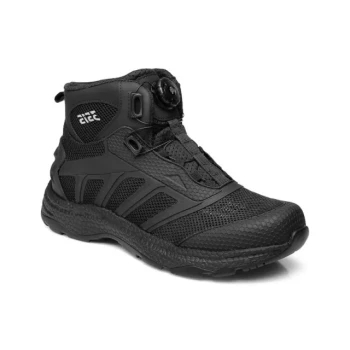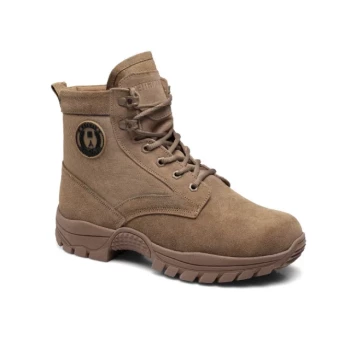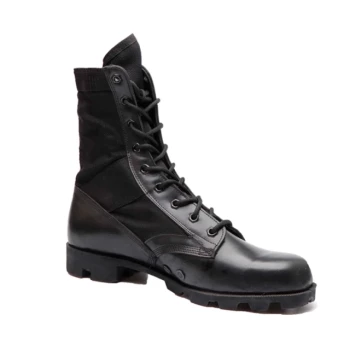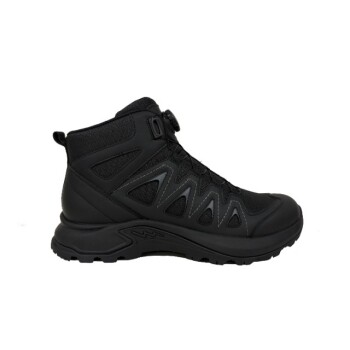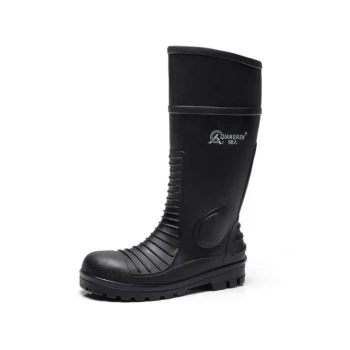To effectively protect the soles of your tactical boots, the most critical steps are implementing a consistent maintenance routine. This involves regular cleaning to remove abrasive debris, allowing boots to dry naturally away from direct heat, and rotating between pairs to let the sole materials rest and decompress. These actions prevent the premature breakdown of the rubber and adhesives that hold your boots together.
The core principle of sole protection is not a single action but a system of proactive care. By managing moisture, avoiding extreme temperatures, and reducing unnecessary stress, you preserve the material integrity and functional grip of the boot, maximizing its service life.
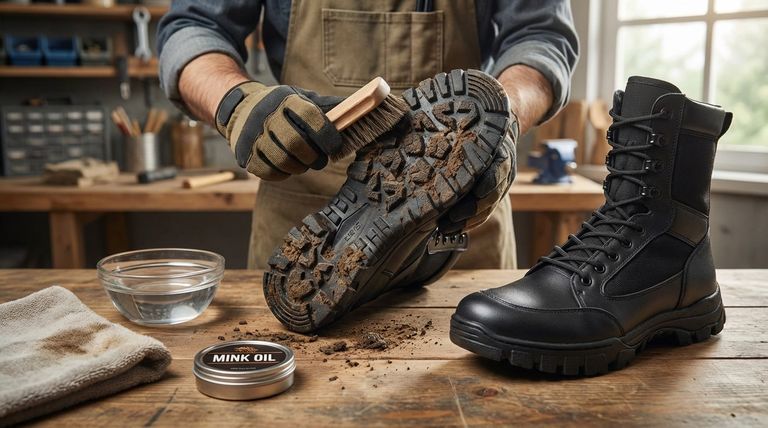
The Foundation: Proactive Maintenance
True sole protection begins with consistent, disciplined habits. These foundational steps prevent the most common causes of degradation before they can cause significant damage.
The Importance of Regular Cleaning
After use, especially in mud or gravel, clean the outsoles. Use a brush and water to remove dirt, rocks, and any chemical residues.
Embedded grit acts like sandpaper, slowly grinding away the tread with every step. Chemicals can degrade the rubber compounds, making them brittle or soft.
Proper Drying is Non-Negotiable
If your boots get wet, let them air-dry naturally in a well-ventilated area away from direct sunlight or heat sources.
Never use a radiator, campfire, or hair dryer. Intense heat can make the rubber brittle, cause it to crack, and critically, weaken the adhesives that bond the sole to the boot, leading to delamination.
The Power of Rotation
Avoid wearing the same pair of boots every single day. If possible, rotate between two pairs.
This gives the materials in the midsole and outsole a full 24-48 hours to dry out completely and for cushioning materials like EVA foam to decompress and regain their shock-absorbing properties.
Advanced Protective Strategies
For those operating in particularly harsh conditions, a few extra measures can provide a significant boost in protection against specific threats.
Using Physical Barriers
In environments with extreme moisture, mud, or chemical exposure, use a pair of rubber overshoes or "galoshes."
This creates an impermeable barrier, completely protecting the boot's sole and uppers from prolonged contact with damaging substances.
Sealing the Welt
The welt is the seam where the sole meets the upper part of the boot. This is a common point for water intrusion and adhesive failure.
Applying a small amount of mink oil or a dedicated sealant to this seam can help waterproof it. Be careful not to overuse these products, as they can sometimes soften leather or materials if applied too heavily.
Choosing the Right Tool for the Job
Protect your high-performance tactical boots by not using them for routine, low-intensity tasks.
If you are doing yard work or washing a vehicle, switch to a simple pair of rubber boots. This saves the specialized tread and construction of your tactical boots for when you actually need them.
Understanding the Limitations and End-of-Life
Protection can significantly extend the life of your soles, but they are ultimately a consumable component. Understanding their limits is key to managing your footwear investment.
Soles are Designed to Wear Out
The tread on your boots provides grip through friction, which by its very nature causes wear over time. The goal of protection is to ensure this wear happens as slowly and evenly as possible.
Inspect Tread Depth Regularly
Just like the tires on a car, the tread on your boots is a critical safety feature. Once the tread patterns are significantly worn down, the boot's ability to provide stable traction is compromised, especially on wet or uneven surfaces.
When to Resole, Not Just Protect
For high-quality boots with a stitched or Goodyear-welted construction, resoling is an option. When the tread is gone but the uppers are still in good condition, a professional cobbler can replace the entire outsole.
This is the final step in the sole's life cycle. It is far more cost-effective than replacing the entire boot, but it's important to know that many lighter, cemented-sole boots cannot be resoled.
A Practical Regimen for Maximum Sole Life
Your strategy for sole protection should align with your operational needs and environment.
- If your primary focus is daily operational readiness: Prioritize a strict rotation and drying schedule to ensure you always have a dry, reliable pair of boots ready to go.
- If your primary focus is long-term value: Use the "right tool for the job" principle, reserving your best boots for their intended purpose and using alternatives for simple chores.
- If you work in harsh chemical or wet environments: Make physical barriers like overshoes a standard part of your kit to prevent direct exposure and material degradation.
A disciplined approach to care is the single best investment you can make in the performance and longevity of your tactical footwear.
Summary Table:
| Key Action | Primary Benefit |
|---|---|
| Regular Cleaning | Removes abrasive grit that wears down tread. |
| Proper Air Drying | Prevents rubber cracking and adhesive failure. |
| Rotating Pairs | Allows materials to decompress and dry fully. |
| Using Overshoes | Creates a barrier against harsh chemicals/moisture. |
| Choosing the Right Boot for the Task | Preserves specialized tread for critical missions. |
Need tactical boots built to last? As a large-scale manufacturer, 3515 produces a comprehensive range of durable footwear for distributors, brand owners, and bulk clients. Our production capabilities encompass all types of tactical boots designed for demanding environments. Let us help you equip your team with reliable footwear. Contact our experts today to discuss your requirements and discover the 3515 advantage.
Visual Guide
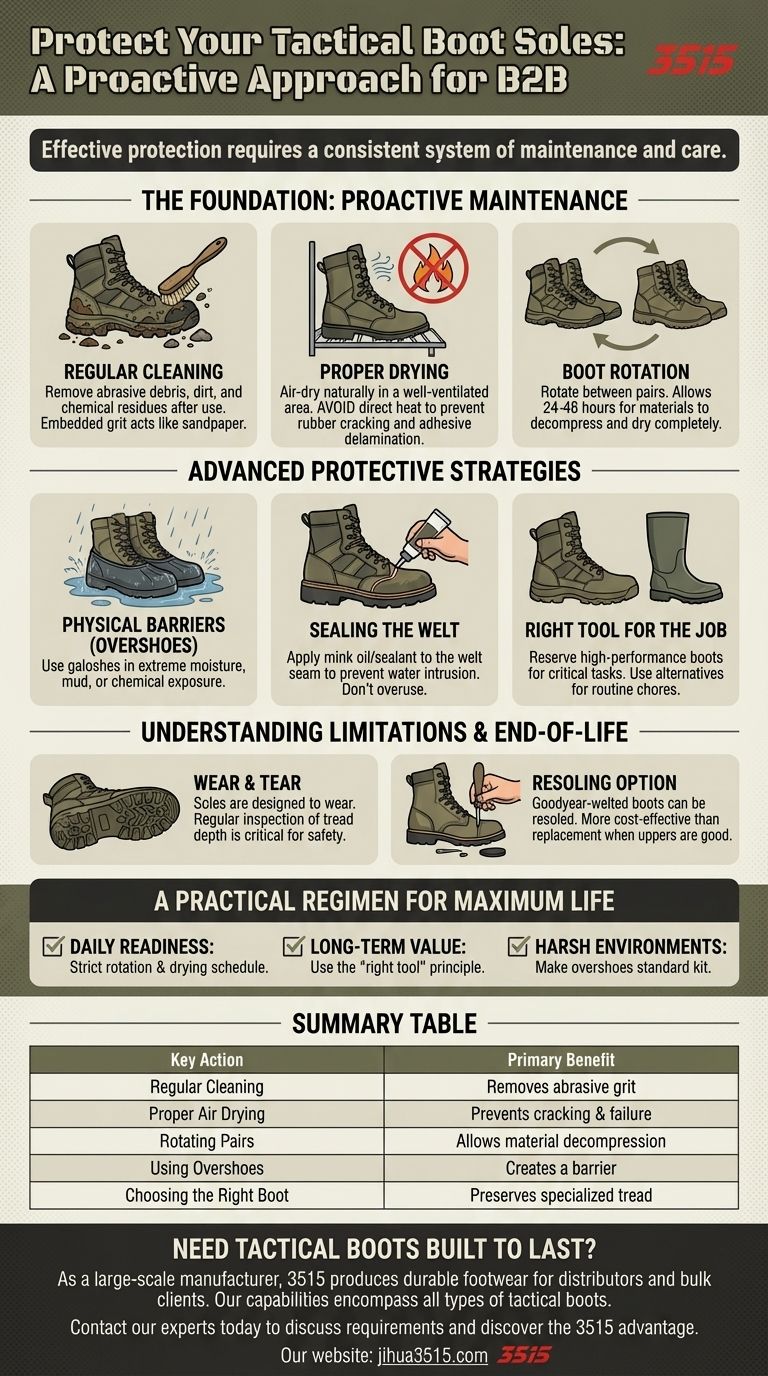
Related Products
- Durable High-Ankle Tactical Boots Wholesale Manufacturer for Custom & Bulk Orders
- Wholesale Tactical Boots High-Traction & Reflective for Bulk & Brand Orders
- Durable Leather Tactical Boots Wholesale & Custom Manufacturing for Brands
- Wholesale Waterproof Tactical Boots Custom Suede & High-Traction Soles
- Durable Leather High-Ankle Tactical Boots for Wholesale & Custom Manufacturing
People Also Ask
- What are the primary uses of tactical boots? Essential Footwear for Demanding Professionals
- Why do tactical boots have high ankle support? Unlock Maximum Stability & Injury Prevention
- How do tactical boots differ from regular footwear? A Guide to Purpose-Built Performance
- What additional comfort features should be considered in tactical boots? Enhance Endurance and Performance
- What features distinguish a tactical boot from regular boots? Uncover the Key Design Differences
